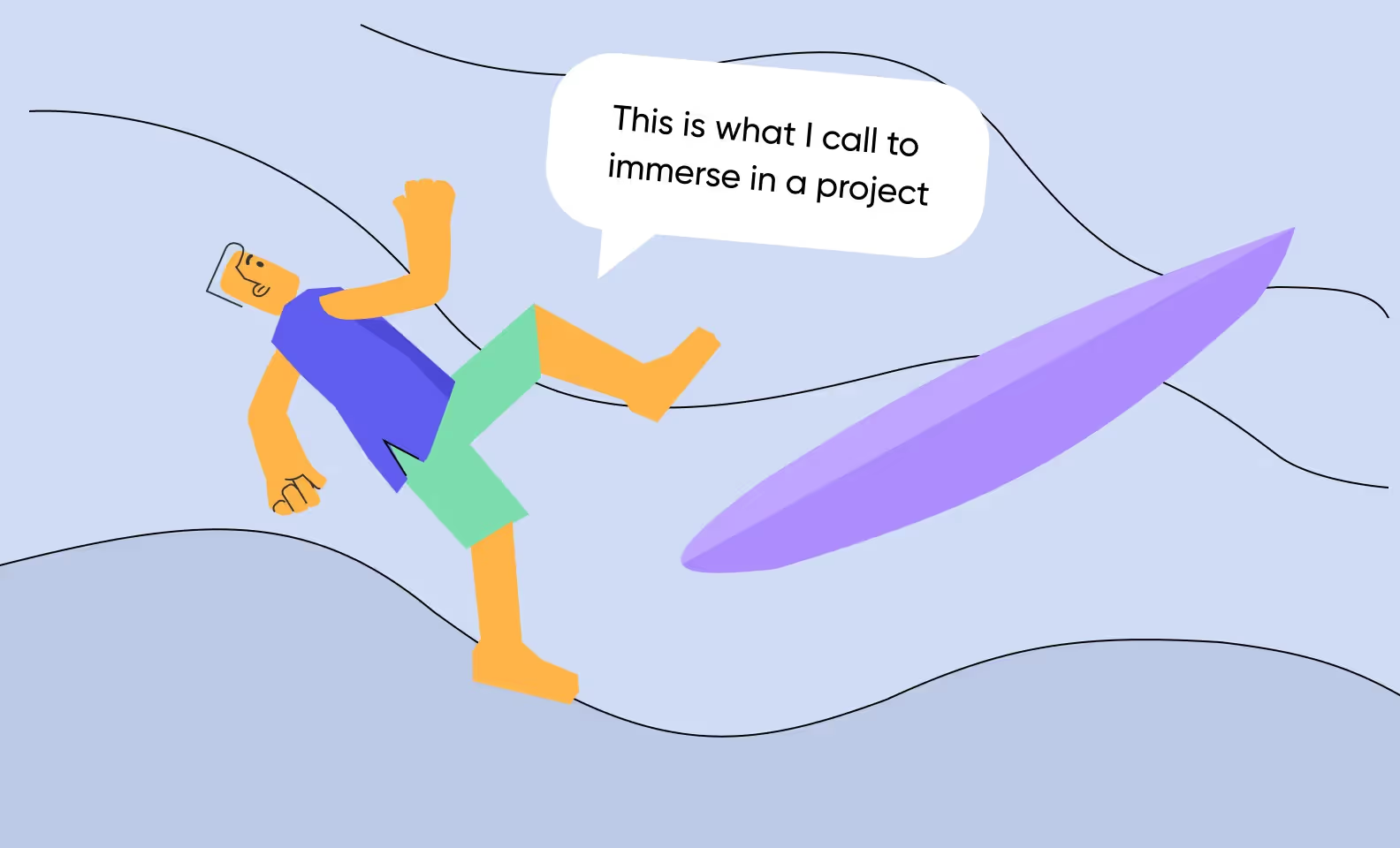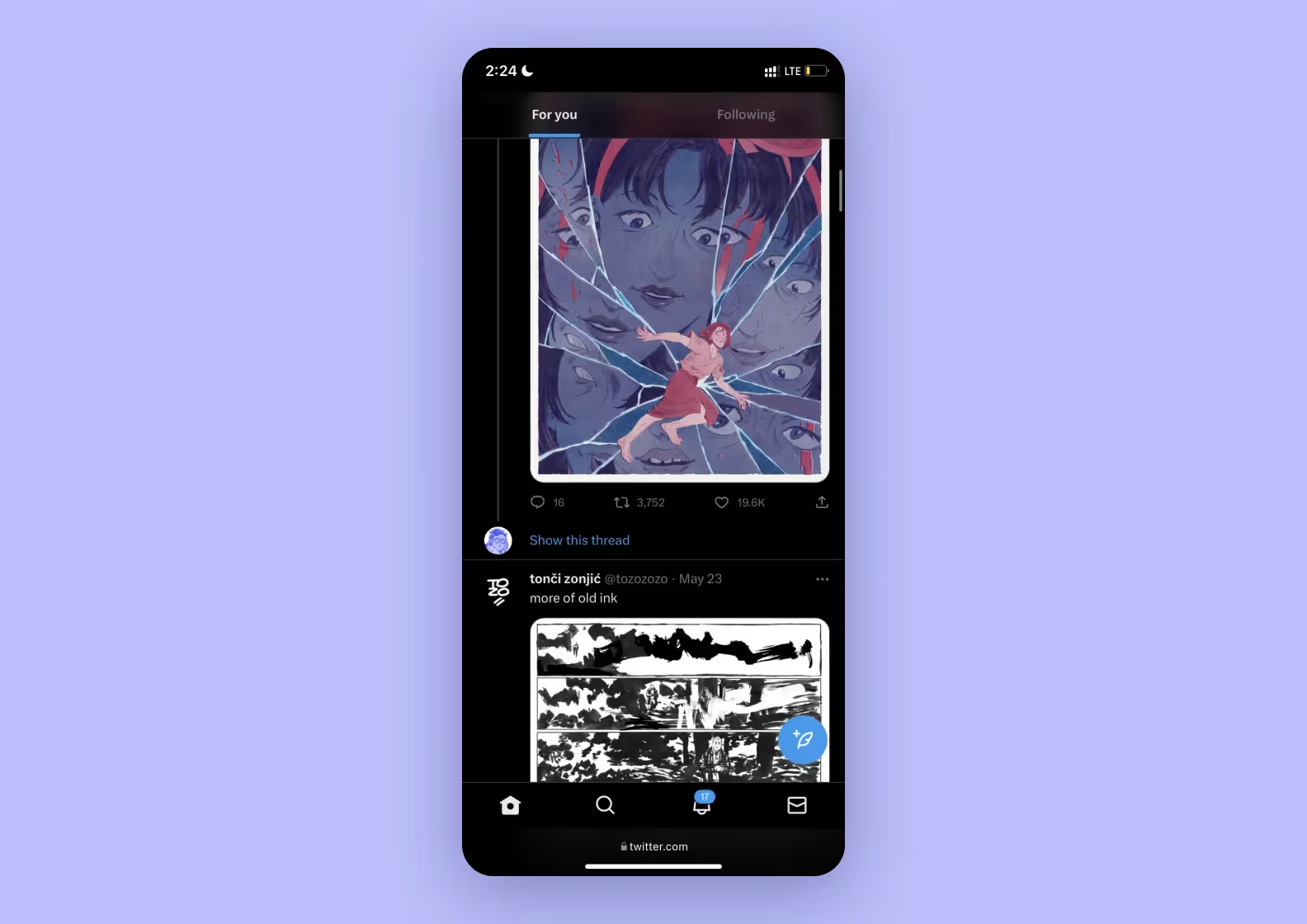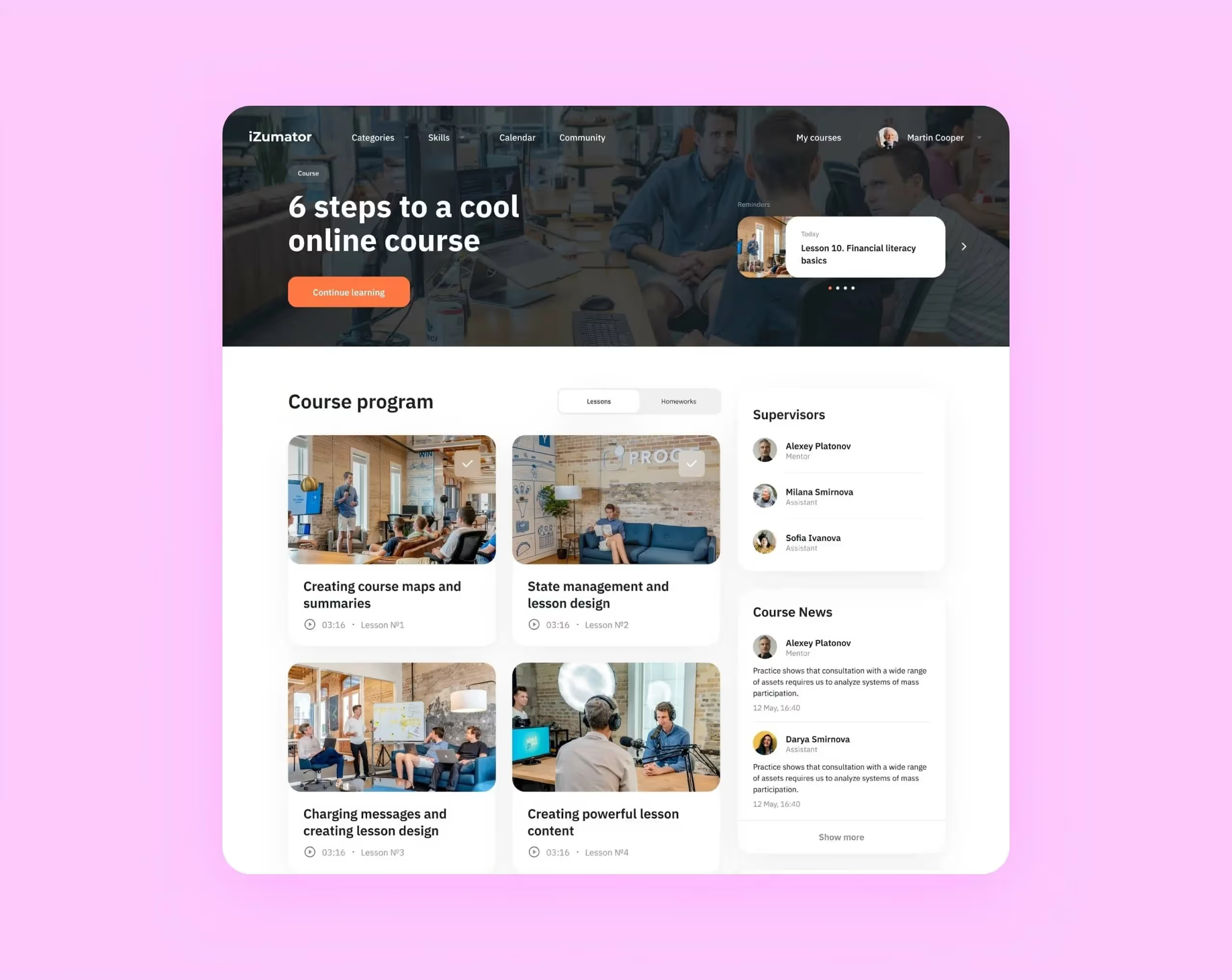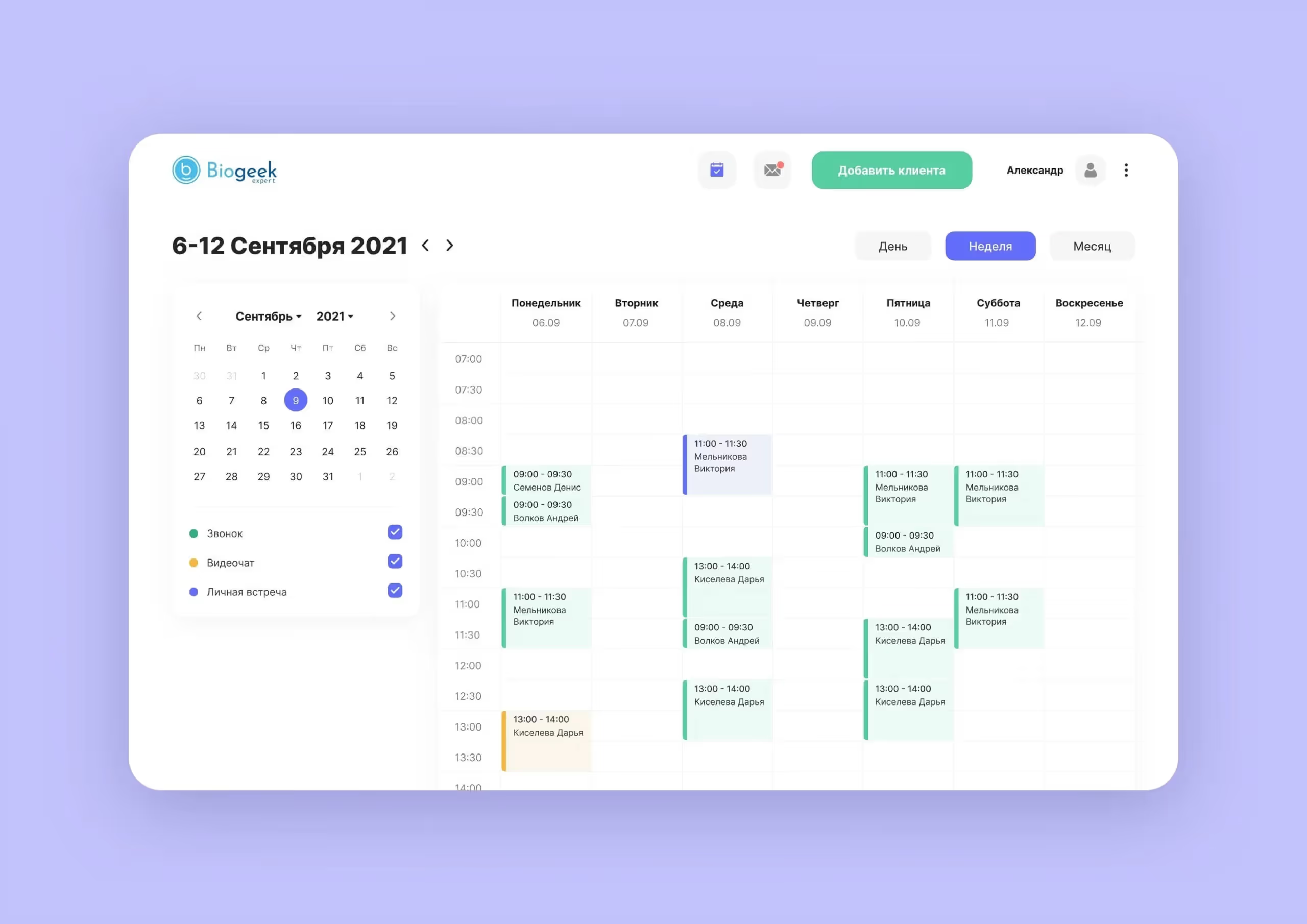


So you’ve decided to create a web app for your business. At this stage thinking about design is a good idea — many customers drop web apps that are poorly designed. But, how can one find a good designer? The internet is filled with horror stories of freelancers getting a deposit and outright disappearing. Figuring out who to trust is difficult.
Outsourcing to a company with experience is the answer. In this article, we'll tell you how to outsource web design: what compels a business to do so — and how to find a company that can help with website design. We’ll also talk about approximate costs and what goes into this figure. Let’s dive in.
.avif)
The global outsourcing market is projected to grow to $1.11 trillion by 2030, while its CAGR is expected to surge by 9.8% from 2025 to 2030. These statistics underscore the effectiveness of outsourcing as a hiring model.
Outsourcing can benefit any company, be it an ambitious startup, a small business operating locally, or a major corporation. Common reasons why it’s the preferred choice are based on saving resources, handling designers, addressing staff’s weak points, and helping release a product on time. Let’s take a look at the benefits of outsourced web design in-depth:
You can leave design and web development to professionals who’ve done this many times before and concentrate on metrics. In the beginning stages of the project, you’ll need to spend some time discussing specifics, deadlines, and your business idea. But after that the company kickstarts the design and handles it by itself. Whether you want to check on the state of the project or come back when the job is finished, the choice is yours.
One of the main benefits of outsourcing website design is that training and finding staff isn't an issue. If you opt for building a design team from scratch, you’ll need to find web designers and developers. If you’re the owner, you’ll either have to oversee them yourself or hire a separate project manager. This can take months.
If you outsource web development and design, you’ll get a team of web developers and designers without worrying about paying their salary. You also won’t need to think about covering their taxes, finding an appropriate office space, and providing employee perks like insurance, while still effectively outsourcing web design.

It’s easy to add more employees if your project requires it, e.g., if you need to seamlessly integrate more web pages into your web app. An outsourcing design agency can allocate some of their designers to help with your web app. This way, onboarding newcomers and tracking their work yourself isn’t necessary.
With an adequate design company, you can outsource design and roll out your product on time. Thanks to skilled designers and developers familiar with your niche, you can be sure the development process goes smoothly — from creating UI/UX design to making the website and fixing bugs.
As we’ve discussed, outsourcing web design to an external team is a nice option. Still, it’s not a one-size-fits-all solution.
Let’s say there's a company that creates handcrafted surfboards. Experienced shapers work on their “pieces of art” so that the custom surfboards express their future owners’ spirit. They’re also designed to suit the surfer’s skill level, style, and even personality if it’s a private commission.
Of course, the brand owner wants to convey all the passion the team has through the design project of their future website. That’s a tricky moment because sometimes it’s hard to put such a profound vision into words. That’s why it’s better to have an in-house web designer who loves surfboards and fully understands the unique needs of the brand, instead of partnering with an outside agency.
Yet, it’s not that easy to find such a passionate specialist. Don’t limit yourself and consider all the possible options, including outsourcing agencies. Just check if the team’s ready to spend a fair amount of time exploring your product.

Some businesses do require speedy updates. For example, it can be true for a seasonal e-commerce store if it specializes in some specific products like holiday decorations and gifts. Such a store needs to introduce new product lines almost every month and create a new design project to change the website according to specific themes and customer needs.
In such a case, the business needs a dedicated in-house team to efficiently respond to the rapid changes. This way the website will be easily updated even during peak seasons for the sake of larger revenue.
When it comes to website design outsourcing, communication really matters. Usually, it’s not a miraculous coincidence — though you never know — but a thorough discussion of the project and all the related questions.
If you already have an in-house designer, it’s easier to deliver a project using your past communication experience. So, in the long run, keeping web design tasks in-house can save you precious time and avoid potential misunderstandings. This is the reason why some business owners prefer to hire a specialist rather than outsource web design. Though, it depends. Some web design agencies are more self-motivated than in-house specialists, which leads to fruitful communication.
So, remember, while outsourcing web design work offers many benefits, it’s not always the best choice. Assess your brand needs and available time before searching for web design agencies.

Let’s briefly examine what differentiates outstaffing, outsourcing, and in-house teams — and what option's best for your company.
In this scenario, you bear the responsibility for creating a team from scratch. You’ll have to find designers yourself by contacting them or posting a job listing. Either way, you’ll have to sift through hundreds or more web designers to find the ones that fit. Assembling a team of 5-7 developers may take approximately 4-5 months. After that, you’ll have to think about paying salaries and supporting team cohesion.
It works best if you already have a team of experienced designers, but their hands are full. If you have an idea for a web app but none of the specialists have either time or skills, outstaffing can help. You “rent” employees from a web design agency to help you make a product.
If you’re under some time or legal constraints, outstaffing is more effective than hiring a designer flat out. Especially if you have a strict number of employees that you can’t exceed, or your deadlines are looming and interviewing new staff is not an option. A web designer acquired through outstaffing will seamlessly weave into your work processes and create a solid look for the web app.
In this case, you hire a web development company and delegate the entire design process to them. The web design company lends its experience with a wide pool of niches and time to your business. The only thing you need to do in this case is check on the progress from time to time.
It’s cheaper than hiring an in-house team in the long run, especially for startups and small businesses. You hire a company for a singular task for 3-4 months — after that, you can extend your agreements or part ways. You also won’t need to maintain an office space or some hidden course as it’s all done on the agency’s end.
If you want to create a web app for your business, we recommend sticking to outsourcing or outstaffing web design work — especially if it’s a one-time deal and you’re not affiliated with web design or other similar niches. It’s cheaper than paying salaries and workplace benefits, and it’s quicker, too.
If you’re not sure how to go about outsourcing design, we can help. We’ve compiled a list with several steps — they'll ensure that you can easily outsource design:
Think of the web app you want to build and its primary business goal. What will you achieve after the web app goes live? Consider your target audience, analyze their needs and preferences. Don’t forget about your competitors — choose a couple of web apps that you like and think about the details that make you adore them. All of this will help you later on when you’re explaining your goals to outsourcing companies.
This is the step where you get to decide on an approximate timeframe and budget. If you have no idea what resources your project may take up, don’t hesitate to <a class="blog-modal_opener">contact us in the form</a> — we’ll calculate the price and the timeline for free.
There are 3 factors that help separate a quality outsourcing company from fraudsters: relevant experience, reputation, and transparency. Let’s take a closer look at them.
Relevant experience. Great contractors collaborate with many companies from different niches. You can find out whether the company has the core competencies to help you by looking at their portfolio. If they have cases that are similar to your request, there’s a good chance they can create the right web design for you.
Reputation. To see if an outsourcing company has a valid track record, check out their reviews. Look for recurring themes in client feedback, as these reveal consistent patterns in their service quality. This'll make it easier to understand the bigger picture — where an outsourcing company excels and where it falls short.

<div class="post_divider"></div>
⭐Our experience
We developed a user-friendly design for Clearstep — an app for monitoring medication intake and automating diagnostics through a chatbot.

We studied the market and competitors. Next, our UX/UI designers created a user-friendly interface that simplified the process of entering symptoms, scheduling visits, adding prescriptions, and getting reminders.

The app has drawn interest from investors due to its well-designed user experience and visual appeal. In the US, our clients, Bilal Naved and Adil Malik, defended the idea with our clickable prototype and obtained $400,000 in financing.
<div class="post_divider"></div>
Transparency. When it comes to negotiating or explaining web design, agencies will try to explain it in the clearest language possible. Their job is to provide every possible option and make sure you understand how they work. These companies won’t keep you in the dark about deadlines or the number of specialists working on the web project. With this in mind, you can rest easy and focus on other affairs.
Before beginning a partnership with an outsourcing agency, you can request to sign a non-disclosure agreement. If you do, a web design agency won’t be able to share any information you consider sensitive. It can be investors’ names, personal data, financial information, and marketing strategy. It’s a very commonplace defense against leaks, and it ensures you’re legally protected in case your contractor shares sensitive info.
It doesn’t matter what type of company you are — a small online shop or a major corporate learning platform. If you sign an NDA with an outsourcing partner, their lips will be sealed and you’ll be able to protect the integrity of your business.
NDAs aside, you can also apply for a patent, especially if your product is unique and has no known competitors. If you’ve got a branding strategy and you’ve figured out what user interface you want, you can trademark your creation. If any other outsourcing contractor violates your rights and steals your work, you’ll be able to sue them and win every legal battle related to copyright and privacy. It’s a good step to take if you’re a “rising star” type of startup. You’ll be able to protect your business idea and everything associated with it from thieves and scammers.
The price of web design depends on many factors, including the timeframe. At Purrweb, our estimate varies from $5,000 to $10,000. Other outsourcing agencies may have a different figure in place.
Our cost is calculated based on popular project requirements. We’ll discuss them in depth a bit further below.
Whether you’re making a web app selling a course or a corporate educational platform, the web app design price is calculated similarly. There are 3 factors at play: the type of web app, the project’s complexity, and the time of design. Here’s a detailed explanation for each of them:
No two web apps are alike. A simple landing page made for gauging whether the product is valuable costs less than a marketplace with hundreds of pages. Usually, web apps are categorized into 4 types: websites, SPA, MPA, and PWA. Let’s examine them:
Website. They come in many different forms, but most common websites act as a single page, e.g., a landing page. There's no option to navigate to other pages, it’s all in one place.
Gmail’s “about” web page serves as a good example of a website. If you want to see new content, just scroll. Every relevant piece of media or text is located on a single web page: if you want to find an FAQ block or a button that helps you create an account, it’s already there. No need to go to a different website page.
In the case of Gmail, all useful content is placed on a single page
SPA (single-page application). It works like a landing page but with a few exceptions. All design elements remain mostly unchanged. It renders new content piece-by-piece and only when you reach it — typically by scrolling down.
It works fast and it’s easier to design, as specialists don’t have to be consistent across multiple web pages, just a single one. But SPAs are prone to hacker attacks, so developers have to be cautious to provide extra security.
X (ex-Twitter) works like a SPA. You stay on the same page, no matter what you do. If you want to see new tweets, you can scroll down to see them without closing the web app.

MPA (multi-page application). Web apps like these have different web pages and links. You can switch between them to see different content. It’s better for web apps with a lot of content, there’s no need for users to scroll for 2 minutes to get to the desired section.
Imagine you made a payment. In the case of a SPA, you’d get a pop-up — a little confirmation window. You’d stay at the same web page you browsed. But if you did that in an MPA, it would redirect you to a separate web page with different content.
Our website works like a MPA. You can switch between different pages to see the web design and development services we offer, e.g., one for cross-platform software development, the other for MVP creation, etc. Each of these pages has its own unique content — if we put them on a single page, it would be too long and load too slowly.
Our main page has every important bit of info about the way we work. You can leave this page and go somewhere else — e.g., to a portfolio page
PWA (progressive web application). This app acts as a hybrid of web apps and mobile apps. It’s typically a multi-page app that a user can install on their smartphone. This way, they can later access it offline.
PWAs load fast and work on many devices. Companies choose it to be more accessible and reach a broader audience. It can re-engage the users by sending them notifications like a regular app, and it works with SEO. Developers can also integrate HTTPS protocols into a PWA — with this, they can make it more secure than a SPA.
One example of a PWA is Flipboard magazine. It’s a web app that also adapts for mobile users — users can check out their favorite stories and follow authors they love.

This mostly refers to the complexity of design elements. If a web app is filled with animated elements, it'll take more time to create a good design, which drives up the costs.
Here’s a table demonstrating what separates cheap, uncomplicated design elements from expensive ones:
At Purrweb, when talking about different levels complexity, two projects come to mind: iZumator and Biogeek.
iZumator is an online learning platform where users can create and complete courses. Our client wanted us to gather inspiration from Airbnb. Other than that, we had to create the design from the ground up. We compiled a moodboard, selected fonts and colors. Our designers also created some icons from scratch.

Biogeek has a neutral design. We chose a commonplace grotesque font and colors associated with the healthcare industry, like turquoise. It also has a standard layout.

This factor is a continuation of the previous two. Generally, if the website is more complicated, it takes more time to develop and design it. More often than not, outsourcing companies work at hourly rates — they calculate the cost of the project according to that metric. If a website has a lot of pages and elements that need to be designed, it'll take more time to execute and cost more.
At Purrweb, we estimate how much time design may take before we begin working on the project. Our business analysts will take a look at how many web pages need to be created. They do this keeping UI/UX design principles in mind — like mapping out a user flow. Also, they take project management into account. This timeframe is then multiplied by our hourly rate.
Eastern European employees are considered to be hard-working and pretty talented in graphic design. Many of them are experienced and eager to work internationally. Business owners choose Eastern Europe as a preferable destination to outsource website design because of paying reasonable rates while getting high-quality web design and development.
One more thing to mention, many professionals in the region are quite fluent in English, making it easier to outsource web design effectively for clients from English-speaking countries.
Many web design agencies in Eastern Europe have an impressive portfolio showcasing their work for international clients. You can review their past design projects to assess their design capabilities and style alignment with your project.
South Asian countries are known for offering cost-effectiveness in terms of web design services. That’s crucial for businesses that are looking for a way to optimize their budgets without sacrificing quality. Professionals in South Asia are committed to delivering quality work while keeping communication transparent and effective.
South Asia is home to a vast talent pool in the area of design and development. The population there's large, and many individuals pursue careers in IT, including web design. This abundance of talent ensures that businesses can access a wide range of skills and expertise.
Latin American countries are in the same time zone with North America, particularly the United States. This proximity facilitates real-time collaboration and communication, making it easier to coordinate with an outsourcing partner. At the same time, the average salary of a web designer in Latin America is lower than in North America, which is convenient for businesses with a limited budget.
Some cities in Latin America, like Buenos Aires and Mexico City, have established themselves as innovation hubs, attracting tech talent and startups. This environment encourages creativity and innovation in design and development.

➡️ Ready to bring your web app idea to life? <a class="blog-modal_opener">Fill out the form</a> to receive your free project estimate and take the first step towards web design. We’ll tell you the approximate timeframes and prices — you’ll have a clear understanding of the resources required for your project.